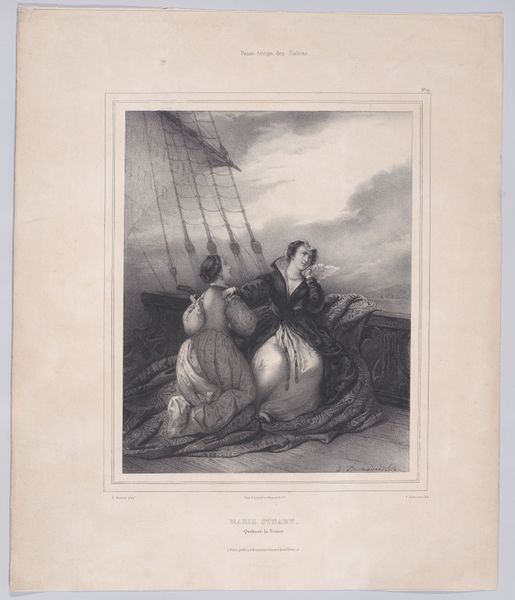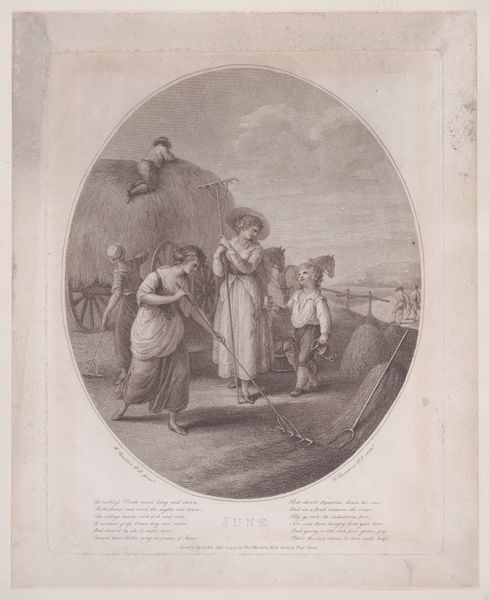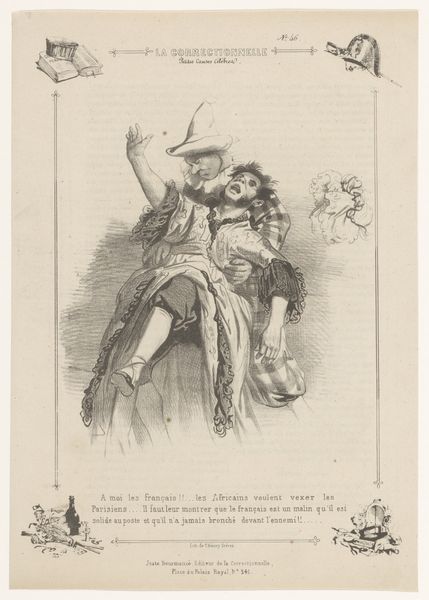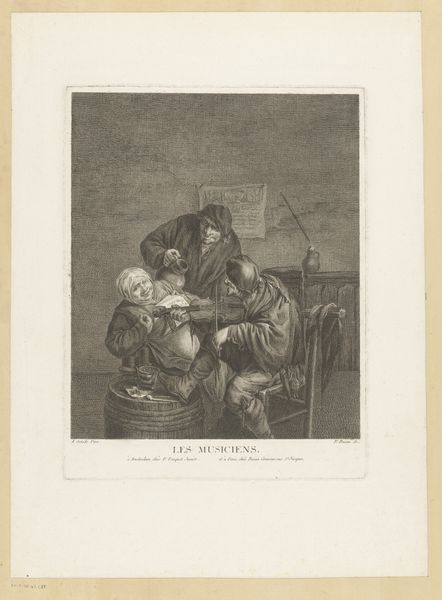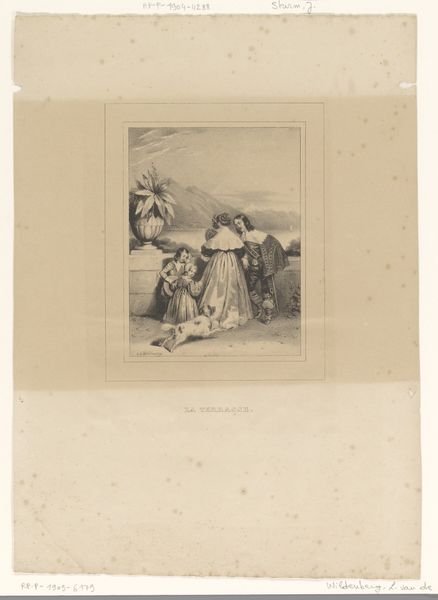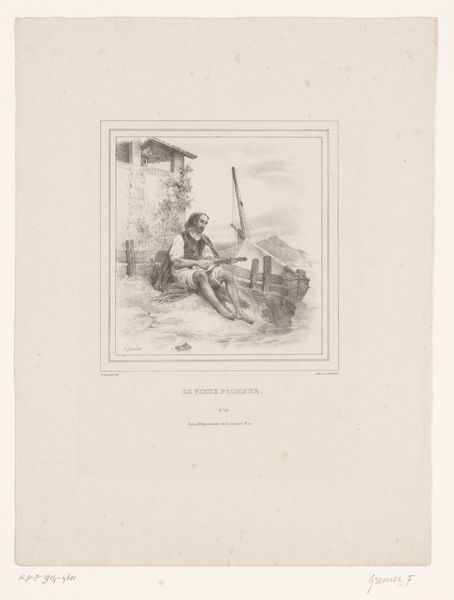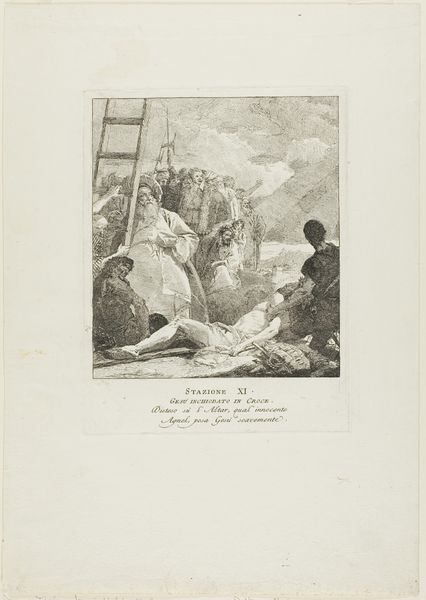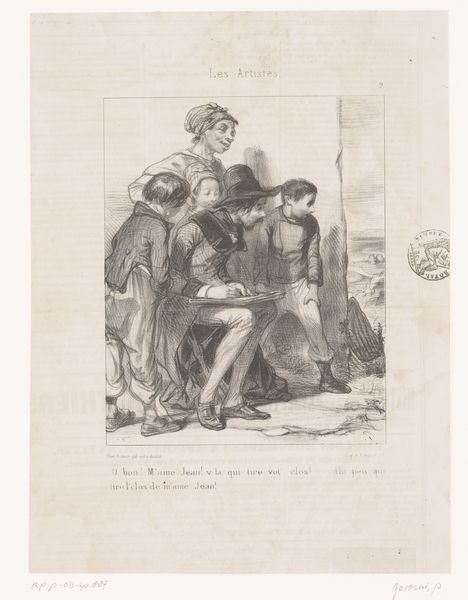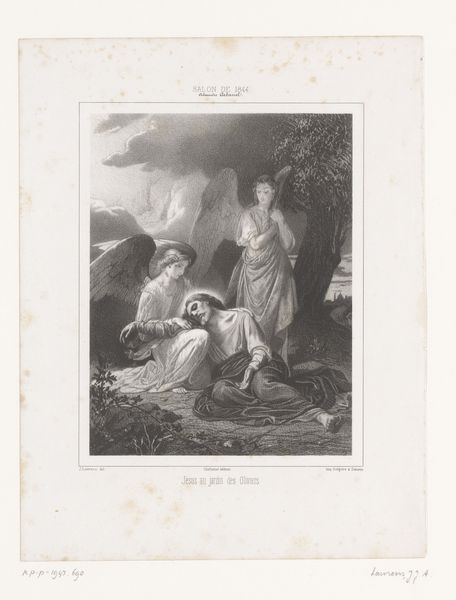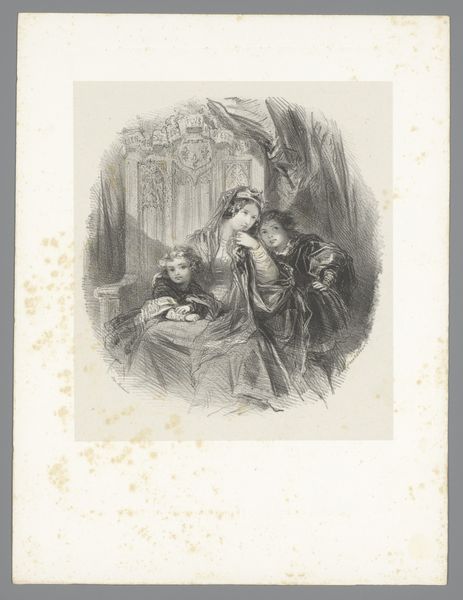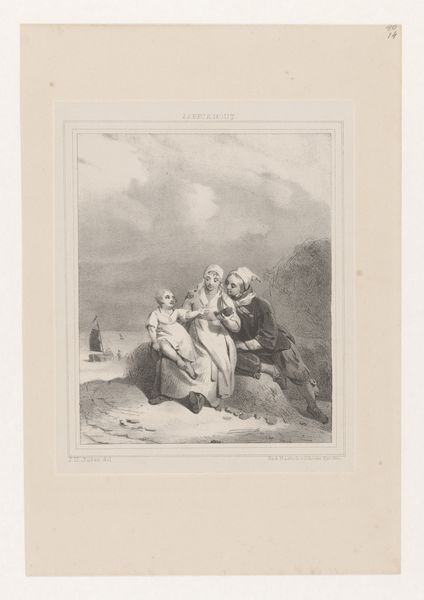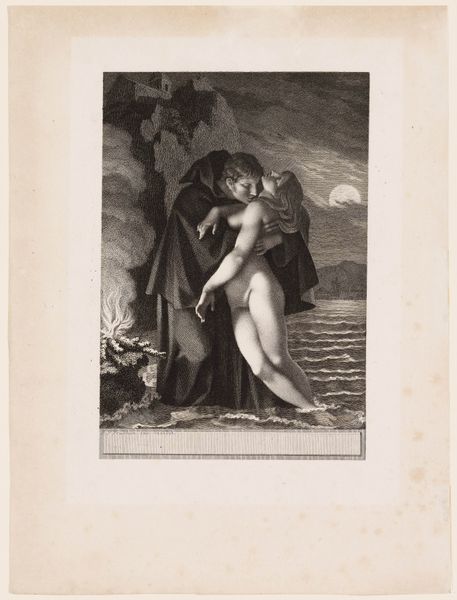
print, engraving
# print
#
figuration
#
romanticism
#
history-painting
#
engraving
Dimensions: height 297 mm, width 232 mm
Copyright: Rijks Museum: Open Domain
Editor: This is Louis Boulanger’s “Pieta,” an engraving from 1844. The detail is really striking, especially given it’s a print. It’s also quite dark and moody. How should we approach understanding this work? Curator: Let's look at this through the lens of its production. This isn't a unique artwork, but one meant for wider consumption. Consider the labour involved in creating the engraving. A design carefully etched for reproduction. Editor: That makes sense. How would this impact how people received it? Curator: Exactly! The engraving makes religious iconography accessible. Pieta images were traditionally paintings or sculptures, things wealthy people would have commissioned. Now you have prints circulated among the broader population, driving religious sentiment and romanticising the divine in people's homes. Think about the engraver's skill being used to democratise art! Editor: So it's less about the artist's individual emotion, and more about mass production influencing popular sentiment. Curator: Precisely. Note also the presence of the cross and instruments related to crucifixion – how the imagery highlights the socio-political control. This wasn't merely devotional; it underscored the establishment. Where does one place the crown of thorns when viewing the 'Pieta' anew? Editor: I see, it's using widely accessible religious imagery as a vehicle to reinforce power dynamics and control society. I never thought about prints having such force! Thank you! Curator: Indeed. Considering the means of production can give you powerful insights. There's more to an artwork than aesthetics.
Comments
No comments
Be the first to comment and join the conversation on the ultimate creative platform.

